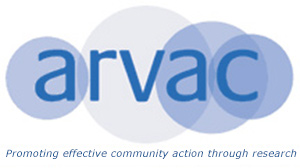There is often an assumption that social media are good for businesses as well as for charities. Social media can help organisations to engage their stakeholders and reach out to new audiences, enabling them to share, cooperate and mobilise supporters, or so the mantra goes. But is it always the case? And how can small organisations and voluntary groups make the most of online social networks?
A few days ago, I presented at an event organised by Barrow Cadbury, TSRC (Third Sector Research Centre) and Arvac (Association of Research in the Voluntary and Community Sector). This was an opportunity to launch TSRC’s new on social media and community action. I was invited to talk about a study on how Big Local community groups use social media, which I carried out in 2016 for Local Trust. For those who don’t know about Big Local, this is a resident-led place-based programme funded by the Big Lottery Fund and delivered by Local Trust, which is an independent charity. It involves 150 communities across England facing high levels of unemployment and general economic decline. Each area receives at least £1m and a range of light-touch support over more than 10 years, but decisions on how to spend this money are made by residents. Each area has its small group of volunteers, who drive the Big Local activities. We call them Big Local partnerships, and my research looked at how they are using social media to engage with the wider community.
So what did we find? Social media raise a number of challenges for small community groups with limited resources and it is pretty difficult to demonstrate impact that can be attributed to online advocacy activities. For example, online engagement is quite tricky to measure. Generally, we rely on number of likes, shares or replies, which are not necessarily a good indicator of a strong relationship between the user and the organisation. On the one hand, the reach of a given post is likely to be underestimated. There are a lot of “lurkers” online, who might not interact but might still use the information they access online. On the other hand, people might click on a post but not get involved otherwise, with limited returns for a community group – the so-called clicktivism phenomenon. The old-fashioned knocking on doors might still be more effective at encouraging engagement at the community level.
The study on Big Local unveiled some clear patterns on social media activity:
- although most Big Local partnerships are online, they are not very active and generally use social media as a noticeboard to posts information about their activities and events, while interactions with followers are less likely;
- on platforms such as Facebook and Twitter people like to talk about everyday stuff in their community, but they’re hard to mobilise;
- the role of networked individuals emerged as very significant – they seem to have greater reach than organisational accounts.
The role of these connected individuals raises some important questions: should we rethink community action in terms of connectiveness instead of collectiveness, and what are the implications for community organisations and groups? Would this raise new problems in terms of equity of access, as the more capacity you have the more technology will deliver for you? It might also lead to a “cacophony” that makes it harder to recognise a unified organisational voice, with a centrifugal pull toward decentralised advocacy work.
One important issue we talked about was the association of social media with the neoliberal discourse. This inevitably raises questions on the values embedded in the commercial platforms we rely on to foster participation and collective action.
So where do we go from here? One member of the audience gave us some hope by telling us about Peckham Vision, a consortium of residents, artists and businesses that, by using a number of different strategies online and offline, is mobilising residents effectively. Social media for them is one among many engagement tools and part of an overall advocacy strategy. Perhaps, the lesson is that rather than embracing social media just because everyone says so, it’s more a case of community groups understanding what it can do for them and stick to what works best based on what they want to achieve and who they want to engage with. After all, counting clicks isn’t what counts.
Sonia Bussu
